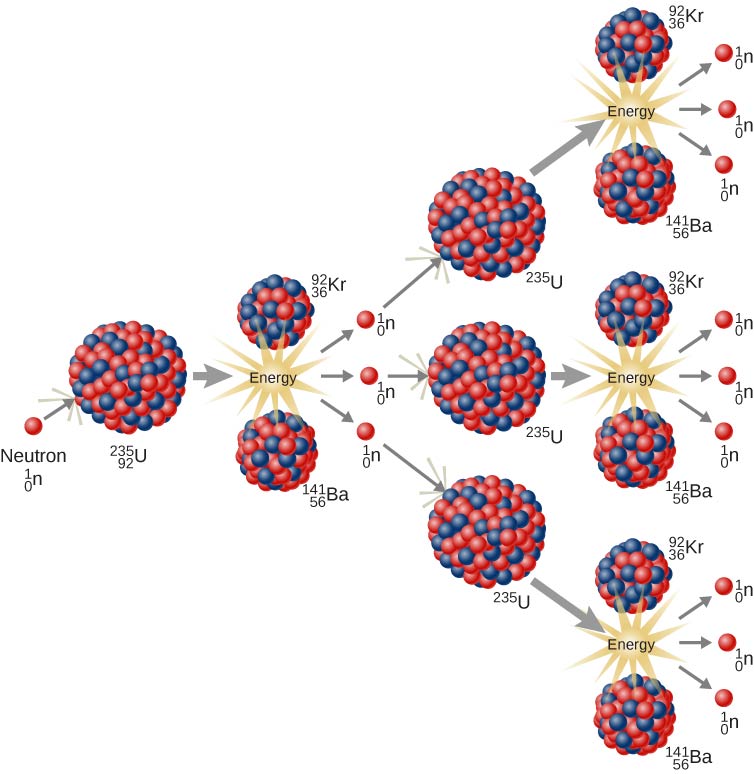

The fission cross section increases from a value of 40 mb at 63 Mev to 2.4b at 124 Mev. By correspondence this suggests that the fissioning nuclei are californium isotopes. Over the entire range of bombarding energies, the most probable total kinetic energy release is 186☖ Mev. The contribution from this kind of reaction is estimated to be of the order of 30% at 95 and 124 Mev. Fast fission of uranium-238 provides a large part of the explosive yield, and fallout, in many designs of hydrogen bomb. A nuclide that is capable of undergoing fission after capturing either high-energy (fast) neutrons or low-energy thermal (slow) neutrons.Although formerly used as a synonym for fissile material, fissionable materials also include those (such as uranium-238) that can be fissionedonly with high-energy neutrons. from the heavier, more slowly moving molecules that contain uranium-238. A possible explanation for these discrepancies is that before the fission event there is competition from reactions in which particles are emitted in the forward direction. By far the most important characteristic of. The mean linear momentum of the fissioning nucleus appears to be less than that of the heavy ion. At the highest bombarding energies, the observed angular distributions were found to be more nearly isotropic than predicted. The percent fission from each isotope in the evaporation chain has been calculated and the over-all angular distribution estimated with the use of the theoretical curves of Halpern and Strutinski. The distributions have been analyzed in terms of the formation of a compound nucleus and subsequent decay by evaporation of neutrons in competition with fission. This work describes an experimental study of the energetics of the fission of U238 performed with solid state detectors. Uranium-235 is the only isotope that undergoes fission. As a rule of thumb, the complete fission of 1 kg (2.2 pounds) of uranium or plutonium produces about 17.5 kilotons of TNT-equivalent explosive energy. Angular distributions and kinetic-energy spectra of fragments, and cross sections for fission of U 238 with 63- to 124-Mev C 12 ions, have been measured with the use of a silicon p − n junction detector. Find out where it comes from, the difference between uranium 235 and 238, its uses in fuel, etc. However, uranium-238, upon absorbing a neutron, forms uranium-239, and this latter isotope eventually decays into plutonium-239a fissile material of great importance in nuclear power and.


 0 kommentar(er)
0 kommentar(er)
